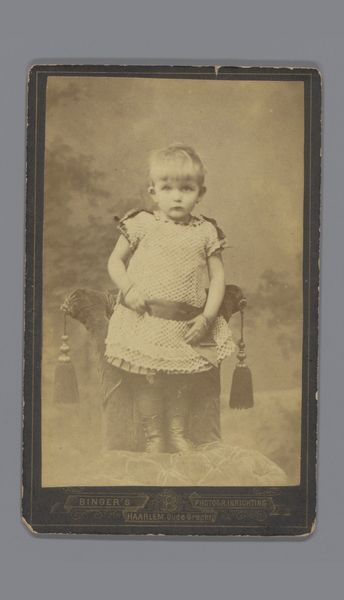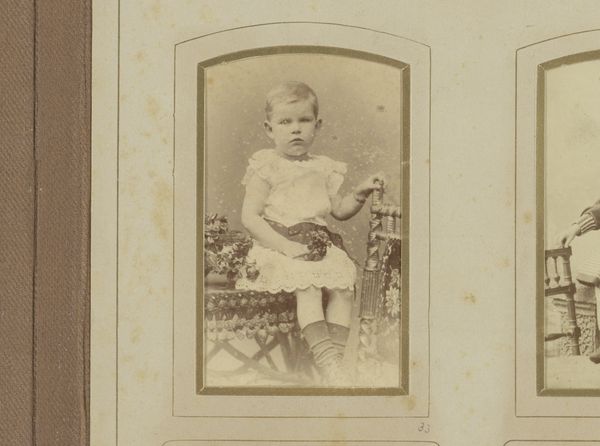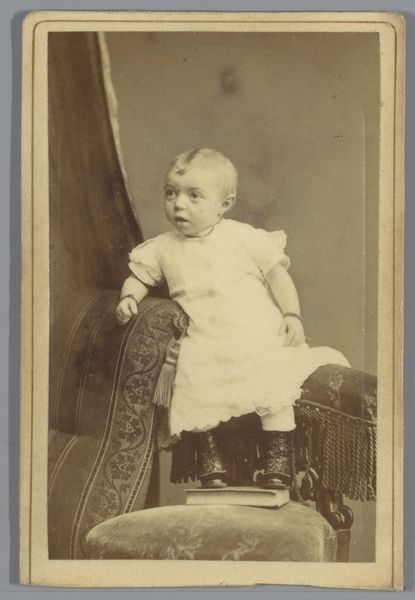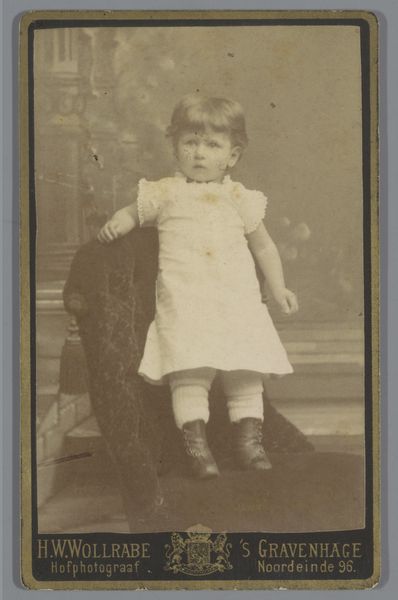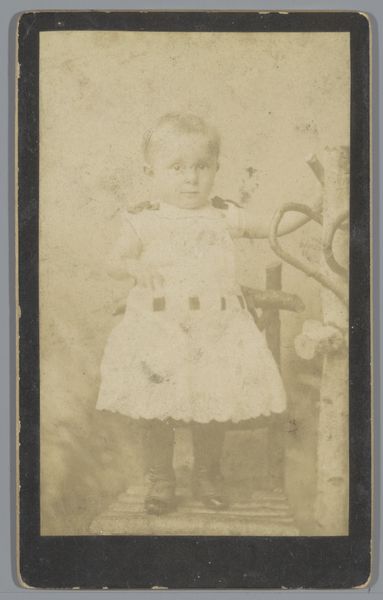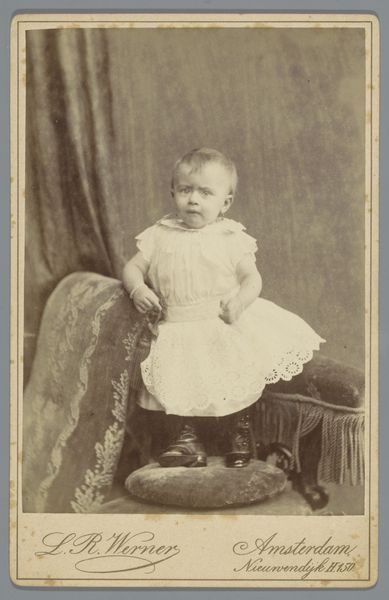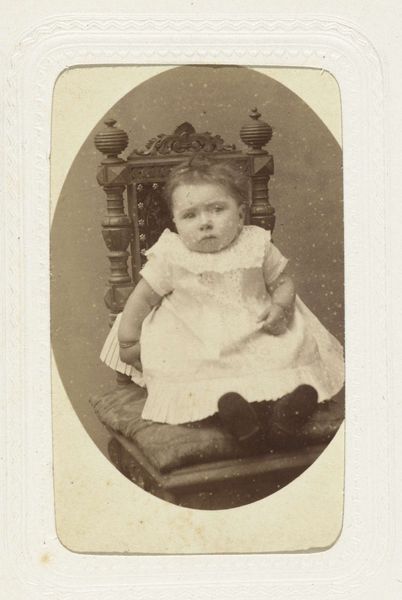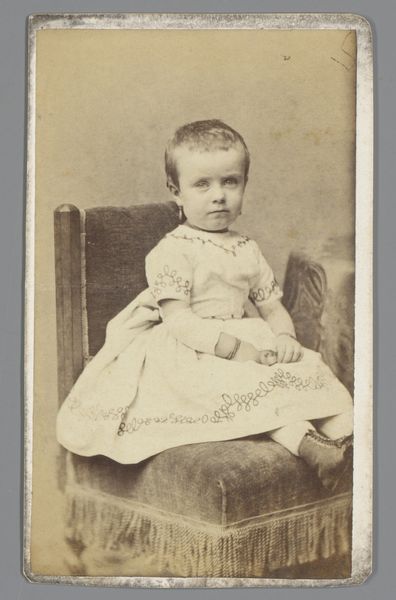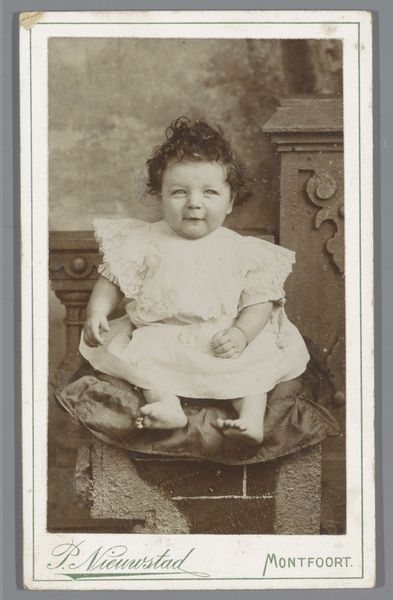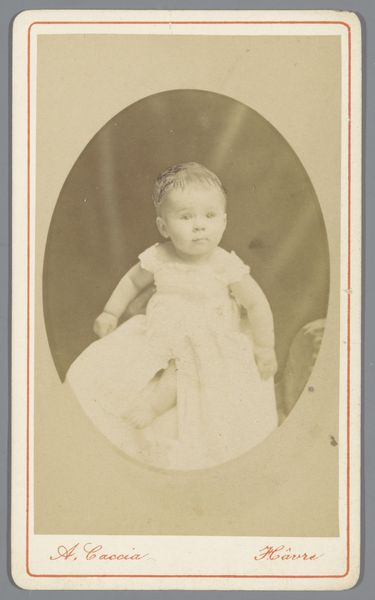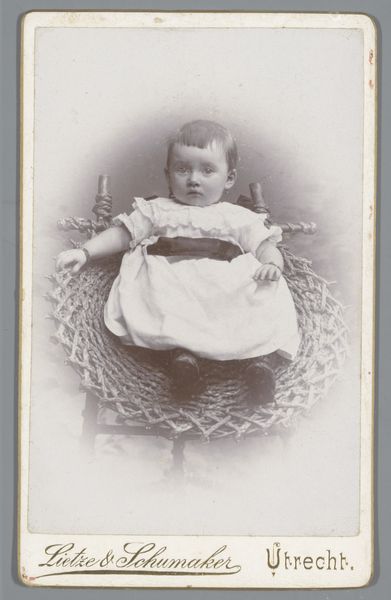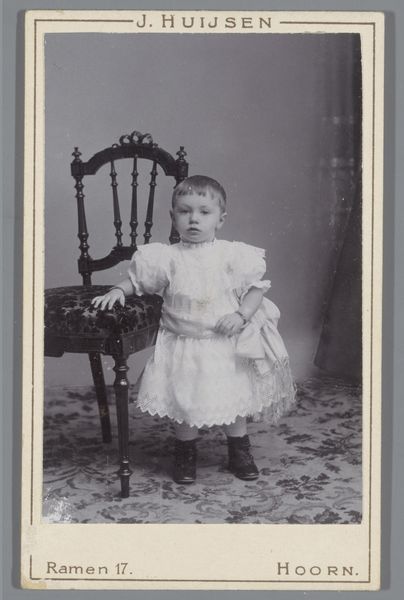
photography
#
pictorialism
#
photography
#
realism
Dimensions: height 100 mm, width 64 mm, height 302 mm, width 146 mm
Copyright: Rijks Museum: Open Domain
Curator: This photographic portrait, titled "Portret van Margo Kessler," dates from around 1890 to 1900. It is held here at the Rijksmuseum. Editor: There is something very touching about this faded image. The texture of the aged photograph, with its soft sepia tones, contributes to an overall feeling of fragility and impermanence. It has a delicate aura that softens its formal composition, presenting a fleeting encounter with childhood in the late 19th century. Curator: I am captivated by the composition and the use of pictorialism. The framing within the framing draws my attention to the carefully arranged details – the intricate floral arrangement beneath the subject, the tactile lace, and the support chair she is grasping. How do these compositional elements and textures relate to broader historical trends and photographic practices? Editor: Well, situated within late 19th-century portraiture, the subject is framed by a romantic sensibility of childhood, albeit constructed in a highly classed way. Her dress, posture, and environment serve as material signifiers that establish the child’s belonging in society. Her pose appears a bit strained – maybe it's indicative of the pressures imposed upon her gender and status from an early age. Do you find that interpretation a bit harsh? Curator: Not at all! It reminds us that what appears delicate or purely aesthetic often carries more profound implications, and there is no singular way of responding to artwork. I appreciate the tension between structure and narrative you are advocating. Editor: Thank you! This analysis of gendered representation, socio-historical, contextualism really unlocks the artwork's embedded meaning. It inspires a deeper consideration of how these visual practices affect and reproduce dominant systems. Curator: Indeed! Focusing on those elements, it really illuminates how images – seemingly fixed in time – exist within an evolving discourse. Editor: I agree; it is a productive exercise in connecting the art-historical past with pressing contemporary problems!
Comments
No comments
Be the first to comment and join the conversation on the ultimate creative platform.

